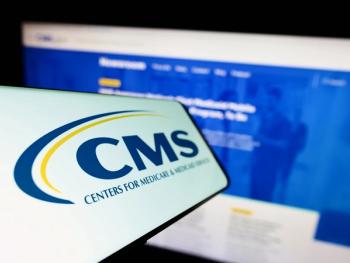
They Cost Millions. How Payers Might Manage Those Astronomical Gene Therapy Bills
Paying in installments with adjustments according to how well a gene therapy works is one way payers are coping with therapies with list prices in millions of dollars.
Treating disease at the genetic level has become a clinical reality in U.S. healthcare and is likely to become even more common. The FDA has approved 16 gene therapies and many more are in development. But gene therapies are priced to cost millions of dollars. Many of the therapies are billed as being curative, although there is doubt about how “durable” the therapies will actually be. If they are curative, they could save money in the long run reducing or perhaps eliminating expenditures on drugs formerly used to treat the now-cured conditions and hospitalizations related to the disease. Still, the large upfront costs loom large for payers of all types. The tension between medical innovation and how to pay for it is a forever problem of U.S. healthcare, but gene therapies are seen as possibly pushing the system toward a breaking point.
In this month’s issue of Health Affairs,
Installments
Spreading out payment in installments is an obvious way to deal with prices that would otherwise mean upfront costs in excess of $3 million for some gene therapies. As Horrow and Kesselheim note, installments over years would make gene therapies like many other treatments from the payer perspective: expensive but fairly predictable. But they also point out some of the issues raised by installments. Is the payer still obliged to pay the installments if the treatment fails? Which payer is responsible for the installment payments if a patient switches insurers? There are also some practical considerations, such as Medicaid programs being held to annual budgets.
Risk pools and reinsurance
In a risk pool system, multiple payers pay into a common fund, which in this case would be used to pay for gene therapy. Conceptually, reinsurance is similar but instead of paying into a fund, payers pay premiums for insurance policies from third parties and those policies pay out if the payer experiences high costs for a patient or if the entire plan experiences unusually high costs. Risk pools and reinsurance would take much of the volatility out of the cost of gene therapy; regular contributions or premiums would replace huge one-time payments or hefty installments. They would also deal with the problem of patients switching from one insurer to another if many insurers are participating in the risk pool or buying insurance from the same reinsurer. Horrow and Kesselheim point out that pooling risk works best if the patient population covered by the participating payers is large, for the same reason that any kind of insurance is more financially stable when there are many entities paying into it and the expensive events covered by the insurance are relatively rare.
Price-volume and expenditure caps
In the price-volume model, the price per unit decreases as the sales of therapy go up. In the expenditure cap model, the price per unit stays the same until a spending limit is reached, after there is no charge for additional units. Horrow and Kesselheim characterize a subscription payment model as an “extreme version” of the expenditure cap model. In subscription payment models, payers have access to an unlimited supply of a drug in exchange for a set fee.
In Horrow and Kesselheim’s view, the volume-based payment model would be best suited for curative treatments for communicable or contagious diseases. Payers would experience the financial benefit of reduced expenditures on traditional drugs and healthcare if as many people as possible are treated with curative gene therapy. Meanwhile, manufacturers would reap the rewards of high sales, even if the unit price of gene therapy ebbs. Curative gene therapies could, in the medium or long run, reduce the market for a therapy as cures tend to shrink the patient population that would benefit from a treatment. In that circumstance, manufacturers might find the guaranteed revenue from a subscription model attractive.
The catch is that these models work best when the marginal cost of producing a therapy is low. according to Horrow and Kesselheim. And, at least for now, that’s not true for gene therapy as the marginal cost of producing them is still quite high, although that seems likely to change as gene therapy becomes more popular,
Performance-based models based on individual patients
As the name suggests, performance-based payment models gear payment according to how well a gene therapy works. They are also called outcomes-based models and means the same thing. They come in a number of different variations. Performance-based payment can be prospective — payer payment is contingent upon the treatment working and stops or sharply decreases when it doesn’t. It can also be retrospective — refunds are paid if it stops working and the payer has paid upfront.
Some performance-based model works on a patient-by-patient basis. Others are based on how well a therapy has performed in a population of patients.
They can be tied to a single, upfront payment; Horrow and Kesselheim note that Novartis has offered a performance-based contrast for Kymriah (tisagenlecleucel), a CAR-T therapy for certain types of lymphoma and leukemia, that requires payment only if the patient responds to treatment after 30 days. But performance-based contracts are more commonly tied to payment by installment; if the treatment stops working, the payer stops paying the installments.
The definition of “stops working” is another complicated issue that needs to be ironed out in these performance-based contracts.
Even so, they are becoming more common. For example, the Medicaid programs in Massachusetts, Colorado, Oklahoma, Michigan and Arizona have outcomes-based contracts for Zolgensma (onasemnogene abeparvovec-xioi), a gene therapy for spinal muscular atrophy, according to Horrow and Kesselheim.
One wrinkle in performance-based contracts are warranty policies that manufacturers can buy to cover the cost of refunds. The manufacturer buys the warranty policy and the payer is the beneficiary. If the treatment fails, the third-party insurer pays the payer for the cost of the drug or possibly for medical costs incurred because the therapy failed.
Some performance-based contacts are based on populations rather than individual patients. Payers adjust payment (or seek refunds) as population-level data about a therapy becomes available. According to Horrow and Kesselheim, the national health systems in France, Australia, Spain and the United Kingdom have national bodies that will repeat assessments for certain gene therapies after one to five years.
“Population performance-based models can be beneficial because they reduce the payers’ risk of paying for failed treatments while being less administratively burdensome than individual performance-based agreements,” wrote Horrow and Kesselheim, adding that the population-based approach “provide the opportunity to incorporate many different outcome measures into the reevaluation, taking a more holistic view of the drug’s value.”
Newsletter
Get the latest industry news, event updates, and more from Managed healthcare Executive.

















































